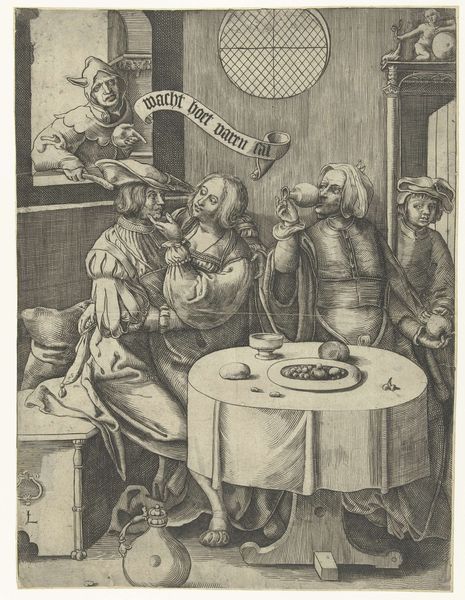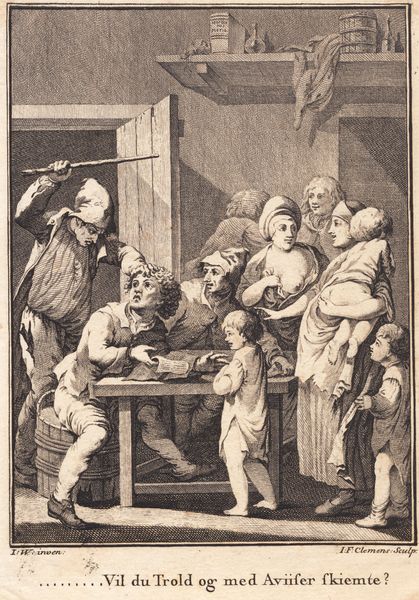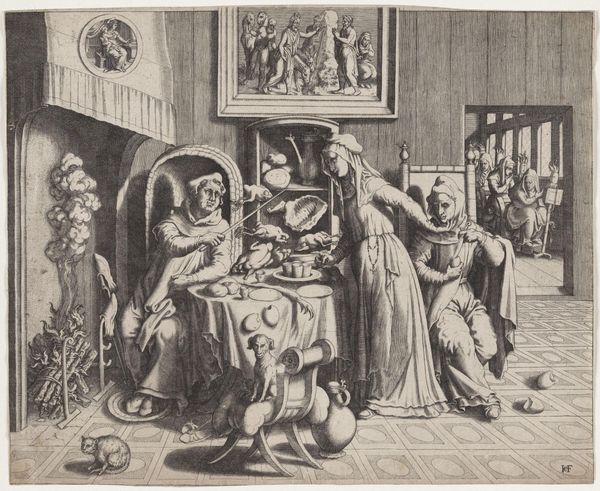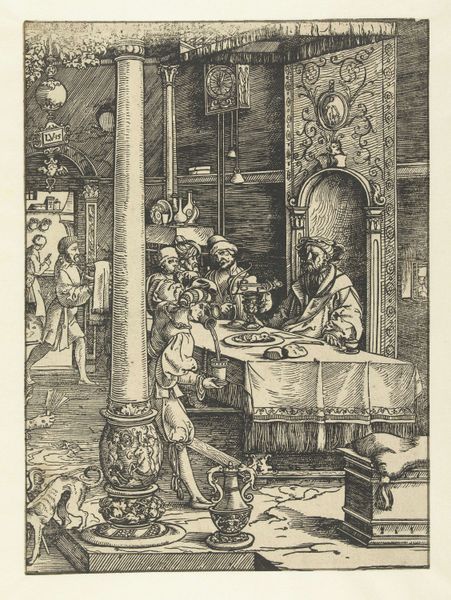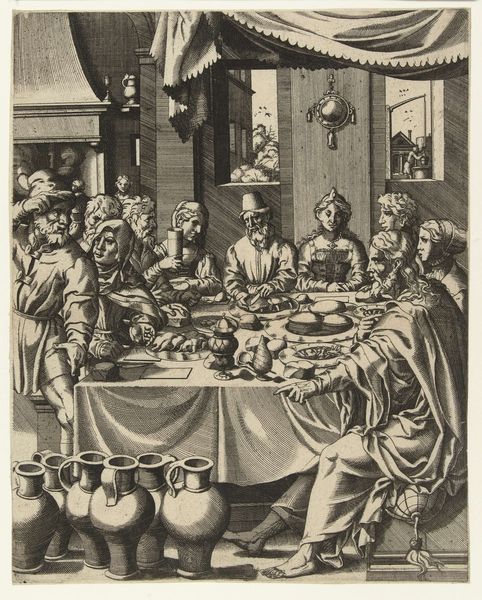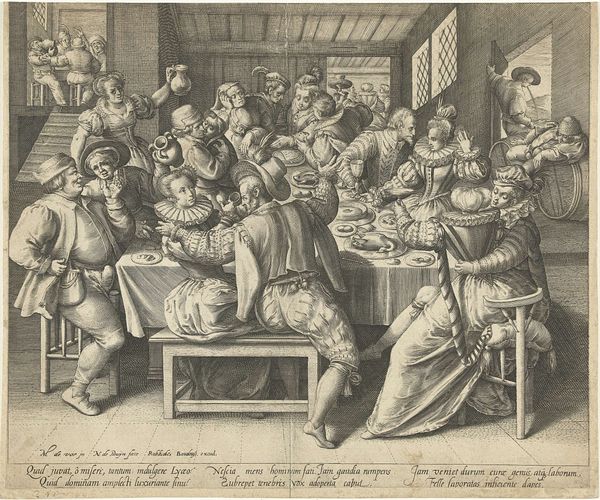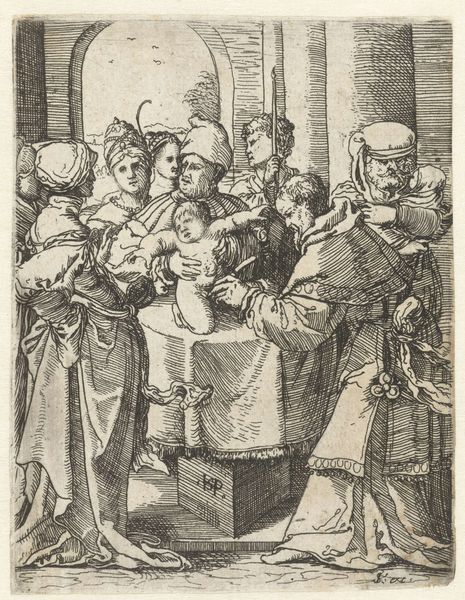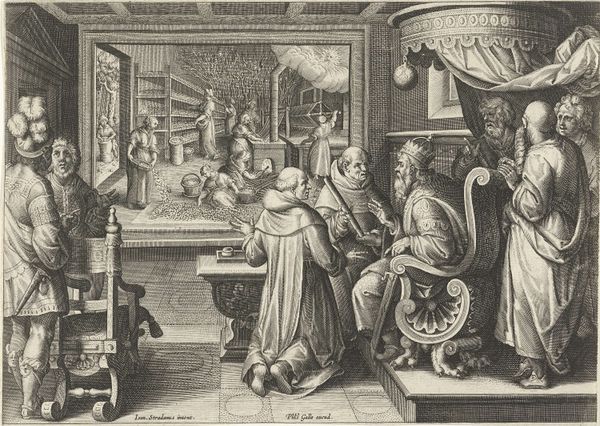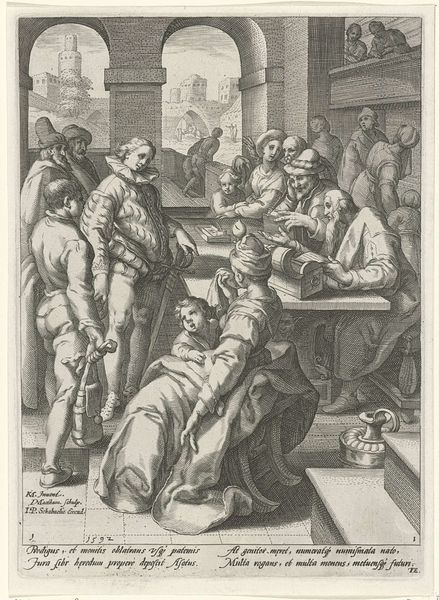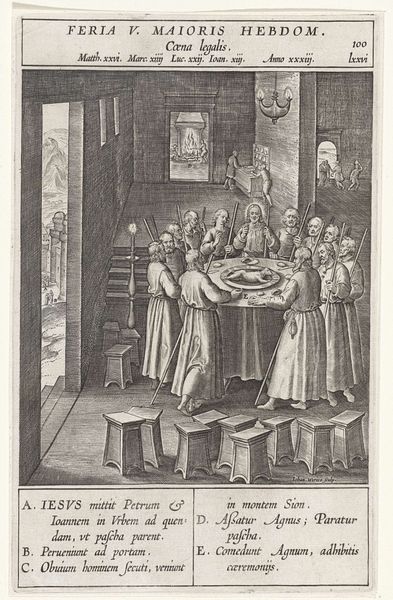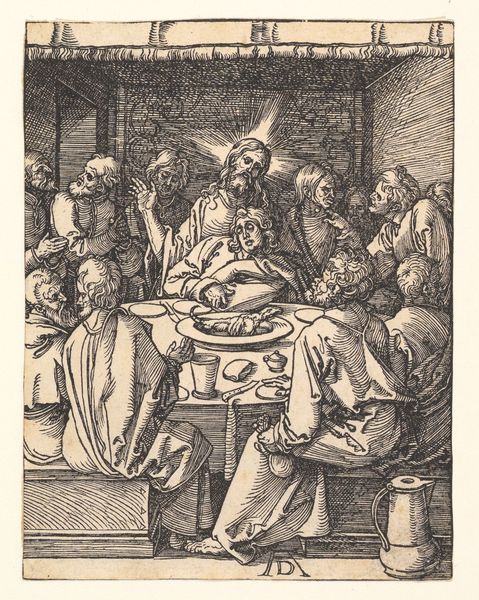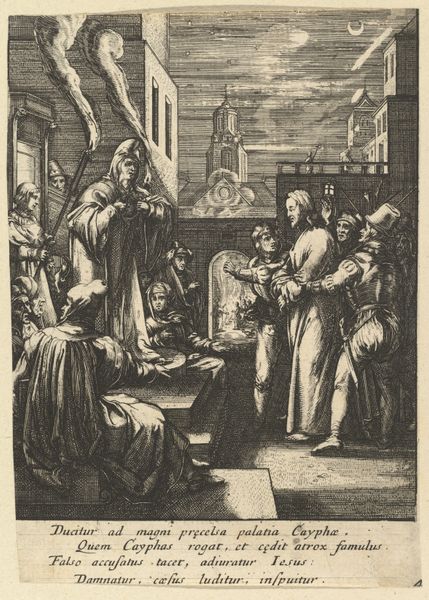
print, engraving
#
narrative-art
# print
#
mannerism
#
figuration
#
line
#
history-painting
#
engraving
Dimensions: height 244 mm, width 186 mm
Copyright: Rijks Museum: Open Domain
Curator: Welcome. Before us is "Dance of Salome," an engraving by Hans Liefrinck, dating from around 1553 to 1558. It is currently housed here at the Rijksmuseum. Editor: Immediately, I'm struck by the textures rendered here. The density of lines! It creates a somber, almost oppressive atmosphere despite depicting a dance. It looks so laborious. Curator: Indeed. It's a quintessential example of Northern Mannerism, a period deeply influenced by narrative painting. Liefrinck uses the engraving to depict a biblical scene with highly stylized figures, reflecting a period of religious and political turbulence. Editor: I see the craftsmanship, but consider how these engravings were disseminated. This wasn't merely art for art's sake. Prints democratized access to these biblical narratives. Who owned the press? Who controlled the image, and therefore the story? The material object speaks of distribution and control. Curator: Precisely! Liefrinck's choice to represent this particular moment, Salome's dance leading to John the Baptist's beheading, reflects the era's obsession with complex moral questions. This image circulated among different social classes. Editor: And the detail suggests that these weren't quickly made commodities. Think of the labor, the care! The intricate lines rendering fabric, the very subtle suggestions of light and shadow. Someone clearly took pride in this… and profited from it. Curator: Also notice the theatrical composition, a hallmark of Mannerism. The figures are deliberately arranged, with Salome presented as the focal point, a dancer, yet somehow an instrument of fate, an object whose presentation by the artist tells a story about women, power, and the court. Editor: And, look, even the tableware reflects prosperity. Engraved scenes of plenty accompany this grim event; how are the means of production, of the artist’s livelihood, linked to the drama presented? I like the visual story implied between these things, because no element here exists on its own. Curator: Exactly. This work speaks volumes about the political landscape, offering viewers both moral instruction and social commentary in a highly stylized visual language. Editor: I am taking away so many thoughts. Beyond religious story is evidence of working, production and distribution. It has real value beyond its message!
Comments
No comments
Be the first to comment and join the conversation on the ultimate creative platform.
